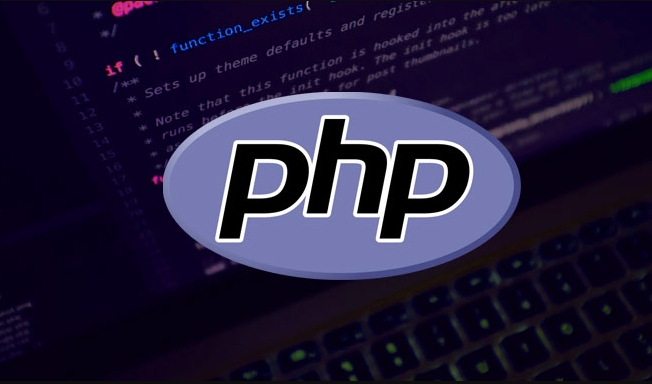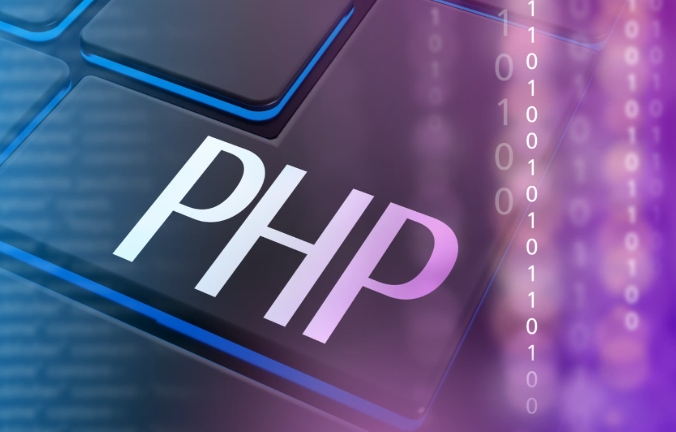The steps to deploy a PHP environment to a cloud server include: 1. Select the appropriate cloud service provider and server configuration; 2. Install PHP and common extensions; 3. Configure the web server and site directory; 4. Set up the database and test the connection. First, you should choose a service provider with one-click mirror installation function. It is recommended to configure it at least 1 core 2G memory and a 20GB system disk; secondly, use apt on Ubuntu to install PHP and necessary extensions, and verify whether the installation is successful; then put the project into the default website root directory and set permissions, or configure the virtual host as needed; finally install MySQL or MariaDB, create a database and user, and test whether the environment is running normally through the phpinfo() page. The entire process needs to pay attention to details such as permissions, service restart and configuration file path.

Deploying a PHP environment to a cloud server is not complicated. As long as you follow the steps step by step, most people can handle it. The following content starts with preparing the server, talking about installing PHP and related components, and then simple configuration, suitable for beginners and projects that want to go online quickly.

Choose the right cloud server
The first step is to choose a reliable cloud service provider. Platforms such as Alibaba Cloud, Tencent Cloud, AWS, and DigitalOcean are all good choices, especially for those who have just started it. It is recommended to choose a service provider with one-click mirror installation function, which can save a lot of time in building a basic environment.

- If you are familiar with Linux, you can choose Ubuntu or CentOS image to install your own environment.
- If you are not familiar with it, you can directly select "LAMP" or "LEMP" pre-installed mirror, which has integrated Apache/Nginx, MySQL and PHP.
- The recommended minimum configuration is: 1 core 2G memory, and the system disk is at least 20GB.
Install PHP and common extensions
If you are using Ubuntu system, you can quickly install PHP through apt. for example:
sudo apt update sudo apt install php php-cli php-mysql php-curl php-gd php-mbstring php-xml unzip -y
These extensions are required to run most PHP applications such as WordPress, Discuz, etc. Different projects may also require additional extensions, such as Redis and OPcache, which can be installed on demand in the future.

- After the installation is completed, execute
php -vto check whether the installation is successful. - If using Nginx or Apache, remember to restart the service to make PHP take effect.
Configure the Web server and site directory
This step is mainly to connect your PHP project to the web server, taking Apache as an example:
- Put the project file in
/var/www/html/directory, this is the default website root directory. - Modify permission:
sudo chown -R www-data:www-data /var/www/html - If using a virtual host, you can create a new
.conffile under/etc/apache2/sites-available/, and then enable and restart Apache.
If you are using Nginx, the main modification is nginx.conf or root pointer in the site configuration file to ensure that index.php is in the loading order of the home page.
Database connection and test page
After the PHP environment is set up, don't forget the database support. Generally used with MySQL or MariaDB:
sudo apt install mysql-server mysql -u root -p
After creating the database and users, just test the connection in PHP through PDO or mysqli.
You can write a simple test.php file and put it in the website directory:
<?php phpinfo(); ?>
Visit this page to see detailed information about the current PHP, including installed extensions and configuration items, for easy troubleshooting.
Basically that's it. The whole process seems a bit too many, but in fact, each step is not difficult. The key is to pay attention to details, such as permission settings, service restarts, configuration file paths, etc. The most prone thing for beginners to make mistakes is often not the technology itself, but the missed a certain step or the missed command.
The above is the detailed content of Steps to deploy a PHP environment on a cloud server. For more information, please follow other related articles on the PHP Chinese website!

Hot AI Tools

Undress AI Tool
Undress images for free

Undresser.AI Undress
AI-powered app for creating realistic nude photos

AI Clothes Remover
Online AI tool for removing clothes from photos.

Clothoff.io
AI clothes remover

Video Face Swap
Swap faces in any video effortlessly with our completely free AI face swap tool!

Hot Article

Hot Tools

Notepad++7.3.1
Easy-to-use and free code editor

SublimeText3 Chinese version
Chinese version, very easy to use

Zend Studio 13.0.1
Powerful PHP integrated development environment

Dreamweaver CS6
Visual web development tools

SublimeText3 Mac version
God-level code editing software (SublimeText3)

Hot Topics
 How to access a character in a string by index in PHP
Jul 12, 2025 am 03:15 AM
How to access a character in a string by index in PHP
Jul 12, 2025 am 03:15 AM
In PHP, you can use square brackets or curly braces to obtain string specific index characters, but square brackets are recommended; the index starts from 0, and the access outside the range returns a null value and cannot be assigned a value; mb_substr is required to handle multi-byte characters. For example: $str="hello";echo$str[0]; output h; and Chinese characters such as mb_substr($str,1,1) need to obtain the correct result; in actual applications, the length of the string should be checked before looping, dynamic strings need to be verified for validity, and multilingual projects recommend using multi-byte security functions uniformly.
 How Do Generators Work in PHP?
Jul 11, 2025 am 03:12 AM
How Do Generators Work in PHP?
Jul 11, 2025 am 03:12 AM
AgeneratorinPHPisamemory-efficientwaytoiterateoverlargedatasetsbyyieldingvaluesoneatatimeinsteadofreturningthemallatonce.1.Generatorsusetheyieldkeywordtoproducevaluesondemand,reducingmemoryusage.2.Theyareusefulforhandlingbigloops,readinglargefiles,or
 How to prevent session hijacking in PHP?
Jul 11, 2025 am 03:15 AM
How to prevent session hijacking in PHP?
Jul 11, 2025 am 03:15 AM
To prevent session hijacking in PHP, the following measures need to be taken: 1. Use HTTPS to encrypt the transmission and set session.cookie_secure=1 in php.ini; 2. Set the security cookie attributes, including httponly, secure and samesite; 3. Call session_regenerate_id(true) when the user logs in or permissions change to change to change the SessionID; 4. Limit the Session life cycle, reasonably configure gc_maxlifetime and record the user's activity time; 5. Prohibit exposing the SessionID to the URL, and set session.use_only
 PHP get the first N characters of a string
Jul 11, 2025 am 03:17 AM
PHP get the first N characters of a string
Jul 11, 2025 am 03:17 AM
You can use substr() or mb_substr() to get the first N characters in PHP. The specific steps are as follows: 1. Use substr($string,0,N) to intercept the first N characters, which is suitable for ASCII characters and is simple and efficient; 2. When processing multi-byte characters (such as Chinese), mb_substr($string,0,N,'UTF-8'), and ensure that mbstring extension is enabled; 3. If the string contains HTML or whitespace characters, you should first use strip_tags() to remove the tags and trim() to clean the spaces, and then intercept them to ensure the results are clean.
 PHP get the last N characters of a string
Jul 11, 2025 am 03:17 AM
PHP get the last N characters of a string
Jul 11, 2025 am 03:17 AM
There are two main ways to get the last N characters of a string in PHP: 1. Use the substr() function to intercept through the negative starting position, which is suitable for single-byte characters; 2. Use the mb_substr() function to support multilingual and UTF-8 encoding to avoid truncating non-English characters; 3. Optionally determine whether the string length is sufficient to handle boundary situations; 4. It is not recommended to use strrev() substr() combination method because it is not safe and inefficient for multi-byte characters.
 How to URL encode a string in PHP with urlencode
Jul 11, 2025 am 03:22 AM
How to URL encode a string in PHP with urlencode
Jul 11, 2025 am 03:22 AM
The urlencode() function is used to encode strings into URL-safe formats, where non-alphanumeric characters (except -, _, and .) are replaced with a percent sign followed by a two-digit hexadecimal number. For example, spaces are converted to signs, exclamation marks are converted to!, and Chinese characters are converted to their UTF-8 encoding form. When using, only the parameter values ??should be encoded, not the entire URL, to avoid damaging the URL structure. For other parts of the URL, such as path segments, the rawurlencode() function should be used, which converts the space to . When processing array parameters, you can use http_build_query() to automatically encode, or manually call urlencode() on each value to ensure safe transfer of data. just
 How to set and get session variables in PHP?
Jul 12, 2025 am 03:10 AM
How to set and get session variables in PHP?
Jul 12, 2025 am 03:10 AM
To set and get session variables in PHP, you must first always call session_start() at the top of the script to start the session. 1. When setting session variables, use $_SESSION hyperglobal array to assign values ??to specific keys, such as $_SESSION['username']='john_doe'; it can store strings, numbers, arrays and even objects, but avoid storing too much data to avoid affecting performance. 2. When obtaining session variables, you need to call session_start() first, and then access the $_SESSION array through the key, such as echo$_SESSION['username']; it is recommended to use isset() to check whether the variable exists to avoid errors
 How to prevent SQL injection in PHP
Jul 12, 2025 am 03:02 AM
How to prevent SQL injection in PHP
Jul 12, 2025 am 03:02 AM
Key methods to prevent SQL injection in PHP include: 1. Use preprocessing statements (such as PDO or MySQLi) to separate SQL code and data; 2. Turn off simulated preprocessing mode to ensure true preprocessing; 3. Filter and verify user input, such as using is_numeric() and filter_var(); 4. Avoid directly splicing SQL strings and use parameter binding instead; 5. Turn off error display in the production environment and record error logs. These measures comprehensively prevent the risk of SQL injection from mechanisms and details.






